Kembra Pfahler
Feminist art icon and theatrical rocker
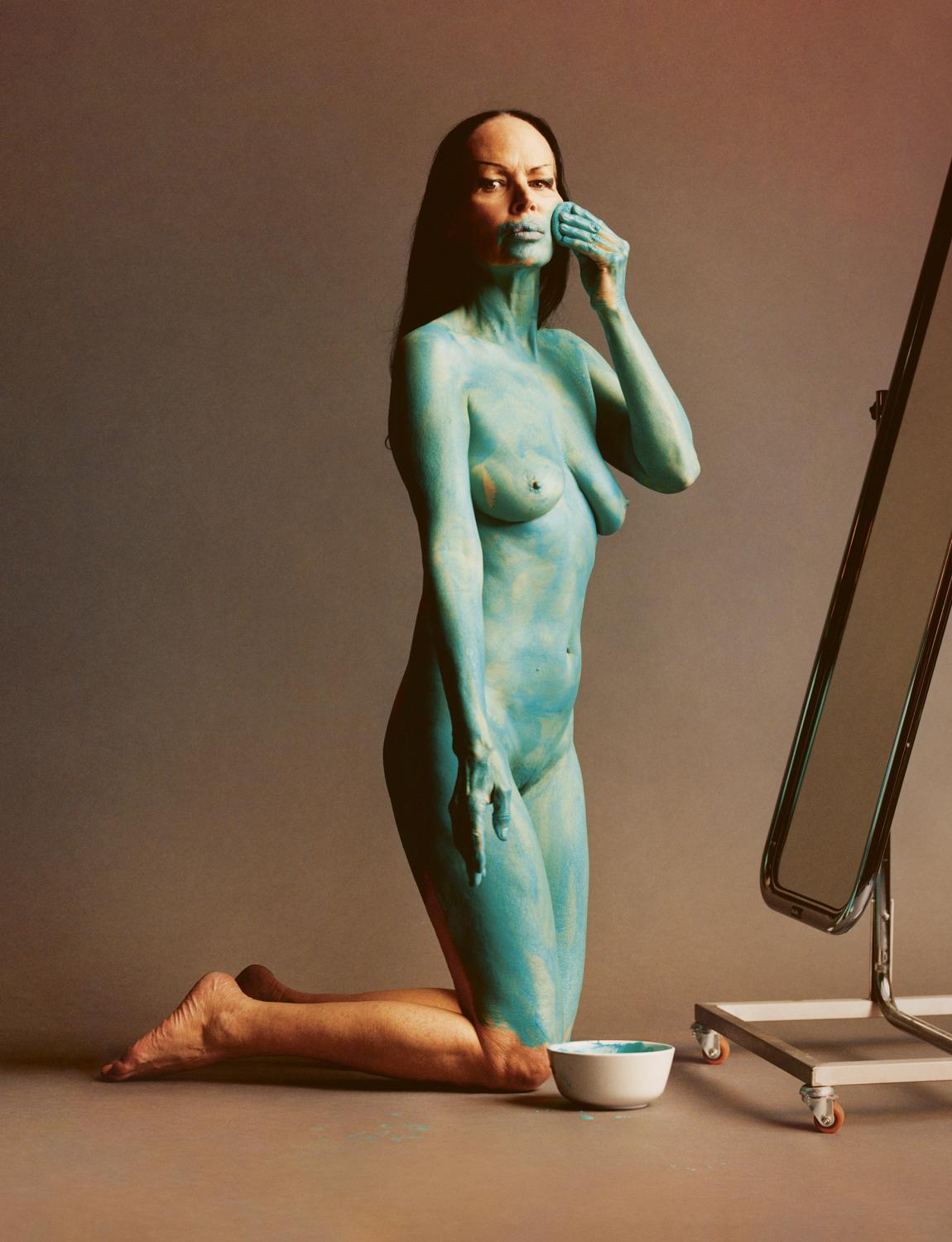
The artist Kembra Pfahler lives by the phrase she helped invent — the future is female. As a vagina-positive performer, linchpin of New York City’s underground, and the bandleader of the Voluptuous Horror of Karen Black, she’s pushing back hard against misogyny, whatever the medium.
Kembra Pfahler is talking to a stranger. We’re standing in front of the American painter John Singer Sargent’s red-brick house in Chelsea, London, and the bemused man she’s approached is loitering outside. A few minutes later, she strikes up a conversation with a cashier at the corner shop where she’s stopped to buy cigarettes and orange juice. “I’m interested in saying hello to everybody,” she tells me as we leave the store.
It is an overcast day in early June, and I have come to meet Kembra at the Thameside apartment where she is staying at the tail end of her collaboration with Circa, the Cultural Institute of Radical Contemporary Arts. A series of short films made with the organisation have appeared on the giant digital advertising screen in Piccadilly Circus throughout the month, as well as in Berlin and Milan.
In each one, Kembra appears in full blue body paint, her teeth blackened, each eye framed in a dramatic upwards cone of black make-up, and her head crowned by an enormous, unruly black bouffant wig which extends far beyond her tiny frame in every direction. Inspired by low-budget horror movies and Japanese theatre, Kembra first created this look in 1982, when she started out as a performance artist in a warehouse in Brooklyn. She adopts it when performing with the Voluptuous Horror of Karen Black, the underground punk band she started in 1989 with her then husband, Samoa Moriki. On stage she is usually naked but for the wig, the body paint – sometimes blue, sometimes red – and thigh-high laced vinyl stiletto boots, her image mirrored by several “Karen Black girls” performing alongside her.
The look is often described as “fearsome” or some variant thereof, but not by Kembra. “Not everyone finds blackened teeth and full body paint beautiful, but beauty is subjective,” she says. “Most of my aesthetic comes from a search for beauty. I am looking to create it where there is an absence of it, and it might feel provocative if you haven’t seen that sort of beauty before, because it takes time for it to find its place.” It has its challenges, though – in particular, the colossal wigs she wears, which she used to assemble herself using synthetic hair but now has made for her by a hairdresser in Milan, Marco Garibaldi, who also works with the American drag queen Lady Bunny. “They’re gigantically heavy, so much so that they can knock me over.”
“Not everyone finds blackened teeth and full body paint beautiful, but beauty is subjective.”
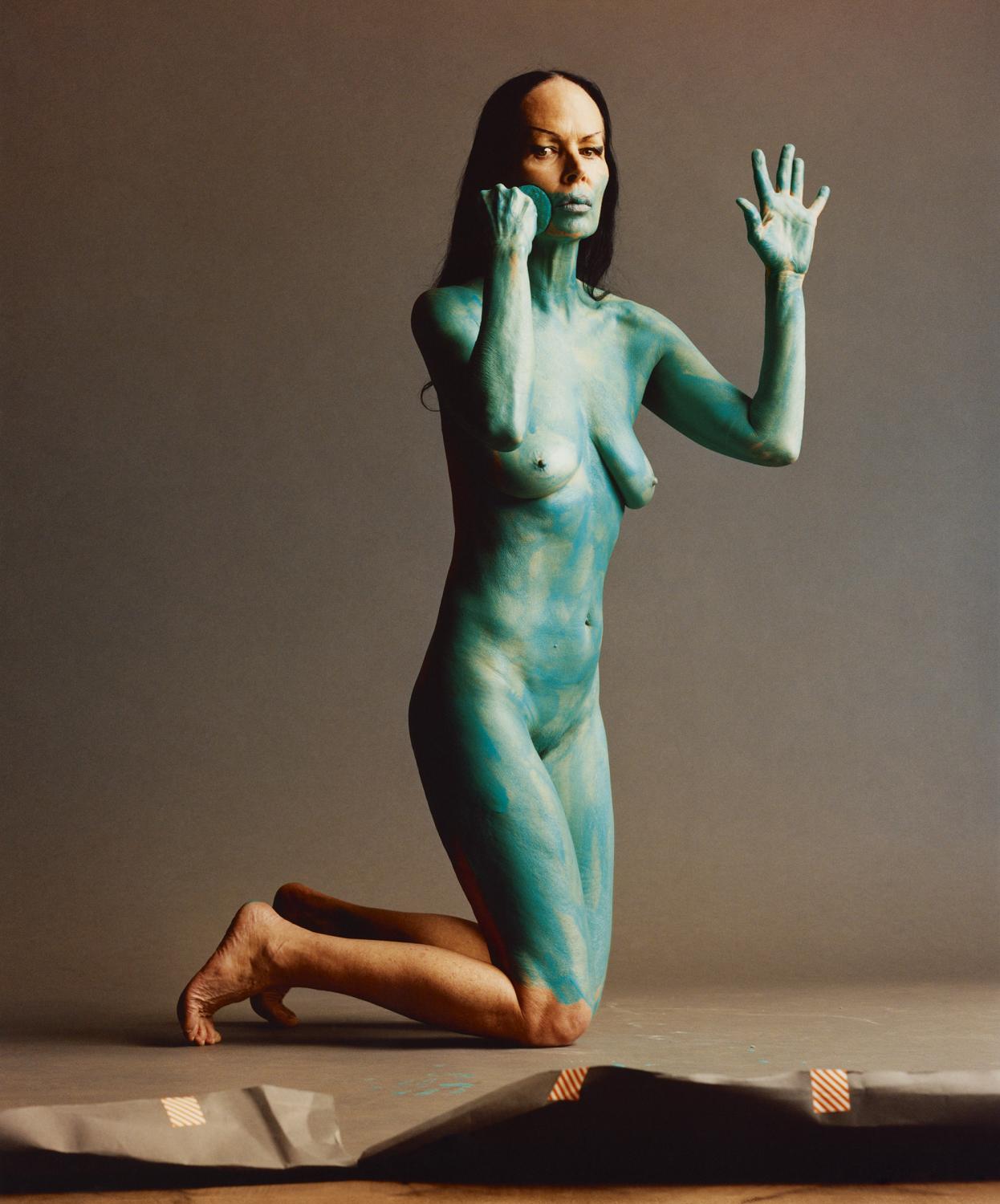
In person, Kembra, 63, is unassuming, her clothes understated. When we meet she is wearing a khaki-green 1960s German flight suit and minimal make-up beyond cherry-red lipstick – MAC’s Marilyn Monroe. A snood covers her head, and 1950s-style tortoiseshell sunglasses frame her face. She speaks so softly that I often have to lean towards her to hear what she’s saying, and she is inquisitive and friendly. “She would treat a street sweeper exactly the same as the president of the United States. You always get the same Kembra,” Josef O’Connor, the artistic director of Circa, tells me later. As we walk down the King’s Road Kembra peers into the windows of the clothes shops. “I never go into stores like this,” she says. “I never buy clothes.” Instead, she mostly makes her own or wears pieces from the capsule collection she created with the designer Rick Owens, a lifelong friend. “It was easy-to-wear couture. Rick also put my Butt Prints on an incredibly graceful sweater,” she says. “There was lots of back and forth with drawings. He was incredibly respectful and patient.”
Kembra became an artist in New York, after moving there from her native California, and she helped to shape the art, film and music scenes of the Lower East Side’s counter-cultural explosion in the 1980s and 1990s. It was a time of enormous artistic ambition but no money, leading to Kembra embracing a philosophy of “availabism”, a term she coined. Put simply, it means making the best use of whatever is available to create art: your own body, or props like a bowling ball she found on the street walking home from art school one day and another she removed from a bowling alley on 14th Street, both of which she strapped to her feet and walked on for a performance. She acted in transgressive, low-budget films by directors such as Nick Zedd and Richard Kern and went on to make her own Super 8 films capturing her live performances. Her raucous and joyful appearances with her band and her radical feminist art actions, which have included standing on her head and cracking eggs on her vulva and even sewing her vagina shut for Kern’s 1992 short Sewing Circle, always ask us to consider what it means to be a woman in this world. What is appropriate behaviour? Why should we be ashamed of our bodies rather than celebrating them?
Unwaveringly following her artistic vision has always been more important to Kembra than financial success. “I don’t really do performances at performance festivals,” she says, to cite just one opportunity she has no problem turning down. “It’s too much of a shopping mall. I’m not an entertainer.” Angelina Volk, a co-director of Emalin gallery in London, tells me, “Kembra wouldn’t be Kembra if she did her work for commercial reasons.” Volk has organised three exhibitions of Kembra’s art since 2016, including performance props such as an enormous, glittering silver penis (“Disco Cock”, 2018, made with the artists Urs Fischer and Spencer Sweeney), photographs of her actions, drawings of the Karen Black girls, and the Butt Prints, impressions of Kembra’s bottom in various colours.
“The art world is so market-obsessed today, and young artists are so strategic about their career choices,” O’Connor says. “Brands have become the new Medici, and we rely on them. So it’s important having people like Kembra encourage young artists not to compromise.”
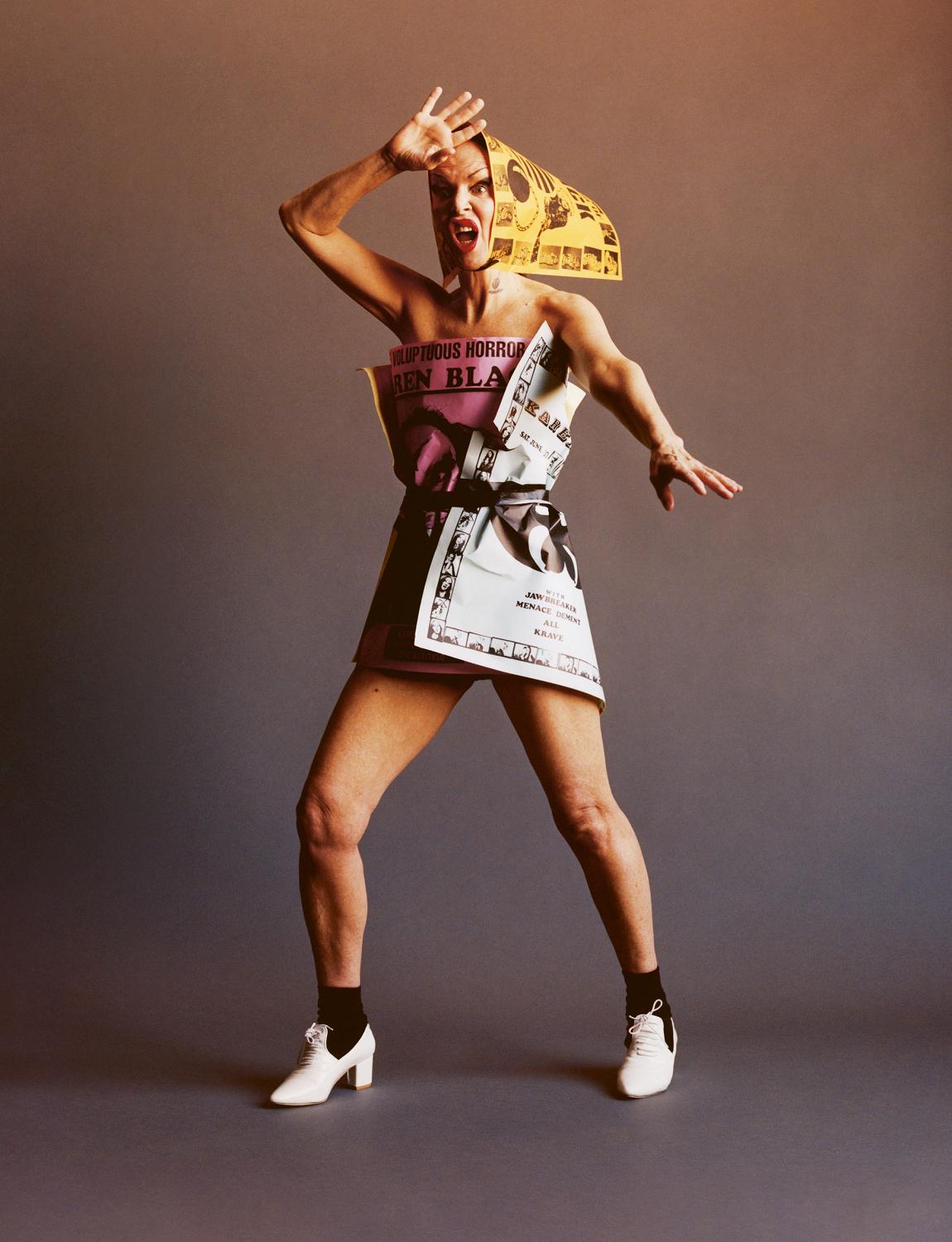
“Performance helps you not implode. It helps you explode rather than implode.”
Kembra was born and brought up in Hermosa Beach, a city in Los Angeles County, alongside two “really wonderful” brothers, Adam, 55, and a drummer in the band Jawbreaker, and Abby, 47. Her father, the surfer Freddy Pfahler, appeared in the acclaimed documentary filmmaker Bruce Brown’s 1958 Slippery When Wet, and her mother, Judy Ball, who had Kembra when she was just 18, went on to run a clothing shop, Whispers, in Pacific Palisades after she and Freddy divorced (she married Larry Ball, a lawyer and writer, in 1969). Judy made Kembra’s clothes, including costumes for her early performances, and taught her to sew.
As a child, Kembra would rise at dawn to watch the tide with her father, learning about riptides and dangerous currents. She started surfing when she was 17 and still surfs now, “whenever I can” – until recently on trips to Maui, Hawaii, to visit her mother and stepfather, though they have just moved back to California. Her aunt, Karen Rea, was a Hollywood casting director for films including Kathryn Bigelow’s Near Dark, Ghostbusters, Death Becomes Her, and many others. As a child Kembra hung around film sets and was cast in a Kodak commercial when she was nine. But she found the prevailing culture in California stultifying and bland and was instead “inspired by the singer and songwriter Diamanda Galás, the musician and performance artist Johanna Went, and by the sculptor and painter Niki de Saint Phalle shooting her paintings – so many different strong women who dared to go where no one went.” Kembra tells me, “I have always been interested in doing things that haven’t been done before and creating new imagery that hasn’t existed before.”
Her childhood in California and the incessant pressure to conform to an impossible, standardised idea of beauty led to “so much shame about being female and my female body,” Kembra says. “I remember my family and people in the film and TV industry always saying to me that I would look OK if I dyed my hair blond and maybe lost 10 pounds. I also got constant criticism from other surfers, kids and their parents. Boys would tease me about my mouth because I have curly, puffy lips, and about my eyes, which kind of lean down. I have a big forehead. Any little idiosyncrasy that a female has, she’ll usually get attacked and criticised for.”
It was only later, after Kembra had become a performance artist and spent time with the queer community in New York, that she was able to exorcise those demons. “I’ve learned so much from my trans sisters, because they had to fight so hard in the 1950s, ’60s, ’70s just for the right to be female. They helped me to love my body because they had to fight so hard for theirs.”
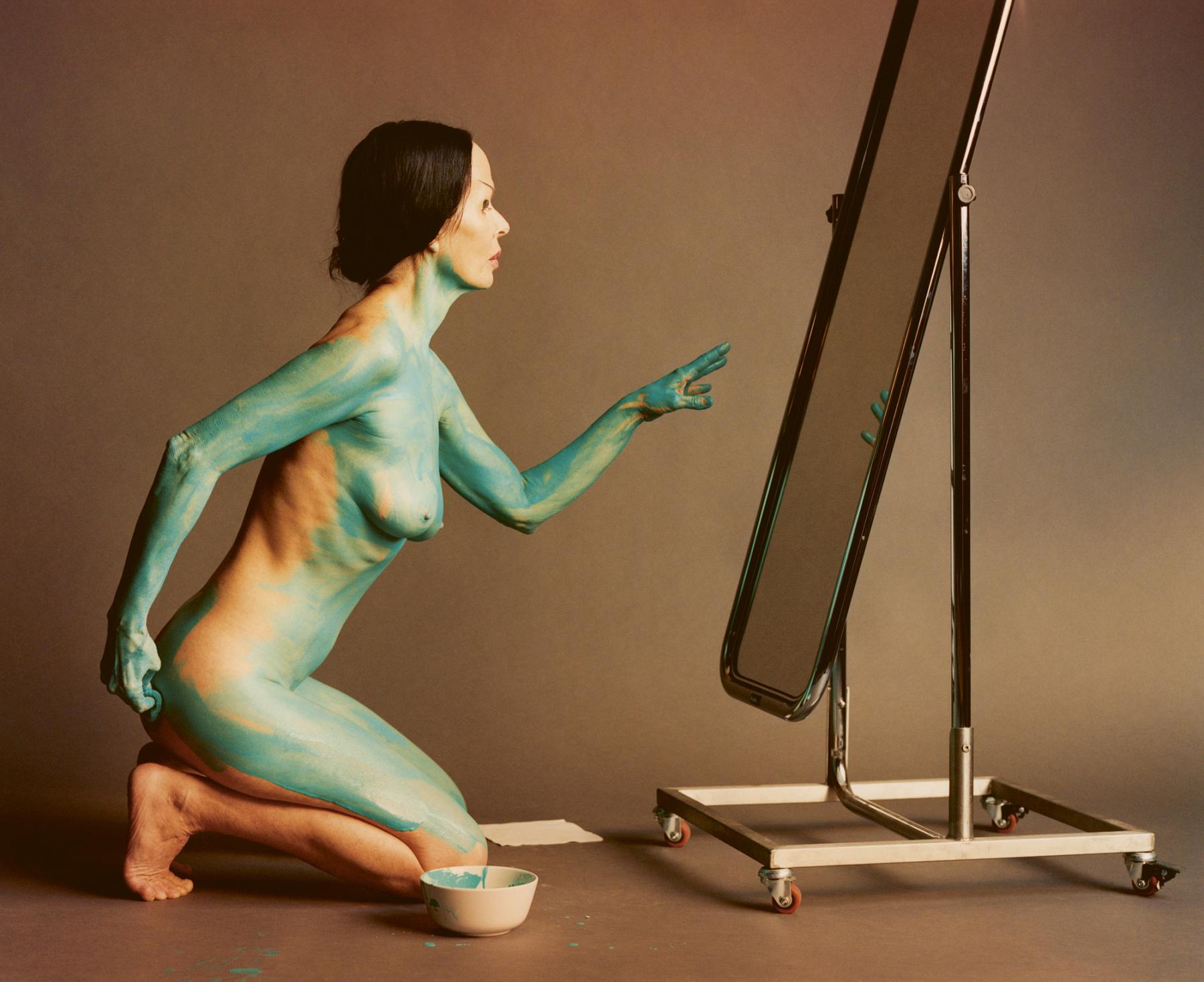
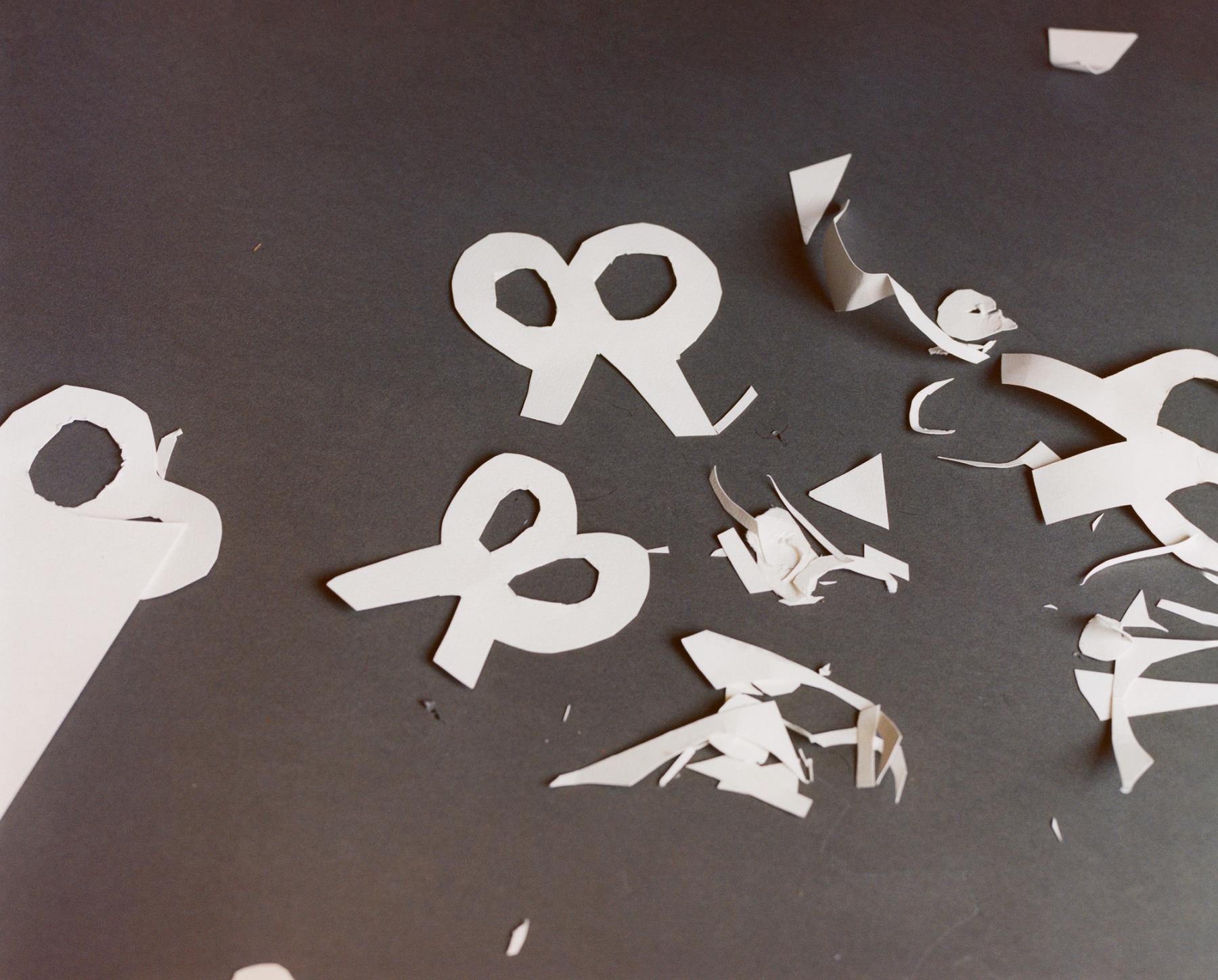
“I have always been interested in doing things that haven’t been done before and creating new imagery that hasn’t existed before.”
In 1979, aged 17, Kembra moved to New York to attend the School of Visual Arts, where she studied under Mary Heilmann and Lorraine O’Grady, who she describes as mentors. “They changed my life and gave me confidence; they made me think about artwork more seriously.” At 20 she married Samoa Moriki, a multidisciplinary artist from Hiroshima, Japan. He introduced her to Japanese theatre like kabuki and Noh, cooked for her – “he would always make Japanese food for me” – and became a lifelong creative partner, even after their divorce in 2002, after 21 years of marriage. Together they founded the Voluptuous Horror of Karen Black – Moriki is the guitar player – and they are currently finishing their fourth album, 26 years after releasing the last one in 1998. (They have a GoFundMe page to finance it, and in the accompanying film Kembra describes the band as “a theatrical rock band to tell little stories with each song that we do.”) Kembra says, “Samoa helped me create a space to exist in and has happily protected it for me. Our friend Anohni [the singer and songwriter] calls him ‘a golden man’.”
The couple moved into a tenement apartment on the Lower East Side in 1983, in which Kembra still lives today. Its sparse interior is painted tile red, “so that it matches the exterior of the brick building,” and she has “a coffin from Ghana in the shape of a boat” in the living room. When the couple moved here in the 1980s, other parts of Manhattan were getting noticeably richer as a result of Reagan-era tax cuts and deregulation, but the Lower East Side was getting poorer. Homelessness increased; buildings were abandoned; drugs and crime were rife. But the area attracted artists, musicians and filmmakers, who lived side by side with immigrant communities from Puerto Rico and the Dominican Republic.
Here, young directors such as Nick Zedd and Richard Kern created a new style of filmmaking which the former dubbed the Cinema of Transgression. Armed with Super 8 cameras, almost no money, and the help of their friends, these filmmakers set about capturing their weird, angry, often violent visions in films that were screened in bars and nightclubs. “We propose that… any film which doesn’t shock isn’t worth looking at,” Zedd wrote in his manifesto for the movement, published in his fanzine, The Underground Film Bulletin, in 1985. “All values must be challenged. Nothing is sacred. Everything must be questioned and reassessed in order to free our minds from the faith of tradition. We propose to go beyond all limits set or prescribed by taste, morality or any other traditional value system shackling the minds of men.”
Kembra played a central role in one of Zedd’s movies, War Is Menstrual Envy (1992), in which she has sex with a rubber octopus (she also made the costumes). “It was comical. My performance was based on Bela Lugosi’s in Ed Wood’s Plan 9 from Outer Space. I love Ed Wood and Bela Lugosi so much. So in Nick’s film, every move I make, every turn, my tongue lashing out, was all inspired by Lugosi. I think it might have been a little bit shocking, because not that many women are willing to show their vaginas and their bodies, but I don’t think I was being very sexual in my nakedness.”
The same year, she had her vagina sewed shut in Richard Kern’s Sewing Circle. “It didn’t hurt, it was quick, and I took out the stitching immediately,” she says, somewhat unconvincingly, before adding “Don’t ever do it.” She recreated the performance for a spread in Penthouse magazine’s 29th anniversary issue. It was an action fuelled by her rage at the misogyny she’d encountered throughout her life. “My mother found it gross, she couldn’t look at it, but I explained to her I was very angry and that this was an outlet for that anger,” Kembra says. “Performance helps you not implode. It helps you explode rather than implode. It helps you share rather than withhold. Even the worst performances are the best performances. It doesn’t matter.”
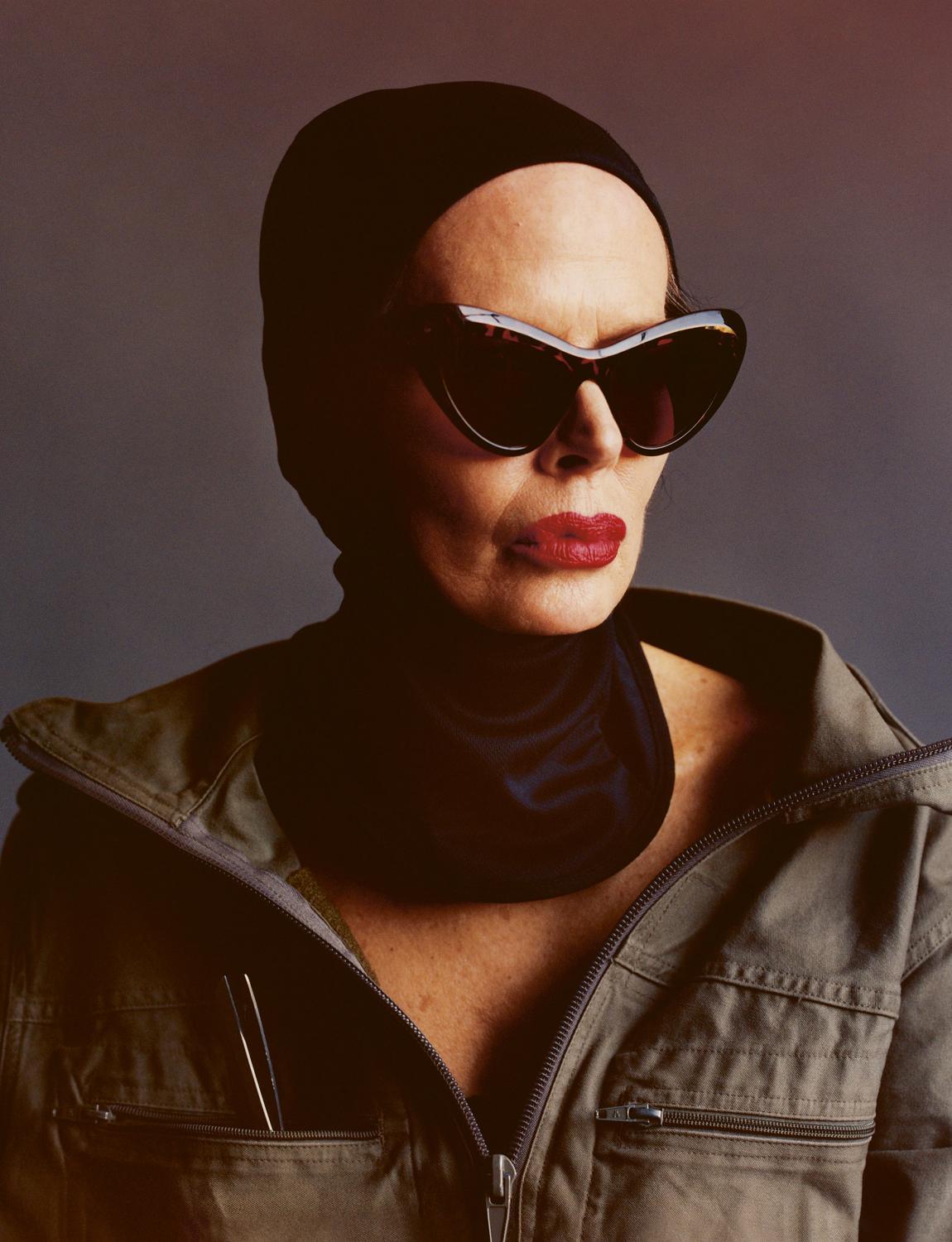
“Not that many women are willing to show their vaginas, but I don’t think I was being very sexual.”
Over the years, Kembra and her collaborators have performed on multiple tours of the United States as the Voluptuous Horror of Karen Black. “The first time I saw them perform was in 1991, and they blew me away. I thought, I have to be a part of this,” Alice Moy, one of the Karen Black girls, tells me by phone. “You feel very empowered when you’re in the body paint, like you’re strong and can do anything.” The band plays in nightclubs and concert halls, museums and galleries, and sometimes even out in the real world. In 2001 the film director Bruce LaBruce photographed Kembra and her friends in Los Angeles. “Kembra was staying in a motel on Franklin Avenue,” he tells me by Zoom from Canada. “I got there, and she’s with six of her girlfriends, and they’re all covered in body paint with their fright wigs on – this was a motel where families were staying – and Kembra said, ‘We’ll just shoot in the courtyard.’ This older lady who worked at the motel came running up to her and said, ‘You can’t shoot here, you’re naked.’ And Kembra said, ‘No, I’m not naked; I’m wearing body paint.’ Eventually we set up in a part of the courtyard where there was some foliage, to try and be a little bit concealed.”
For the shoot, Kembra and her collaborators staged “The Wall of Vagina”: the women lie on top of one another, legs apart, vaginas facing forward, to create a living, breathing monument to femininity. “There were 14-year-old boys in lawn chairs watching,” LaBruce recalls. “At one point Kembra put on a little towel and walked up to one of them and said, ‘Where are your parents?’ And he’s like, ‘They’re out sightseeing.’ And she said, ‘You don’t have to mention this to them.’ And he was like, “No, no, no, I won’t mention it.’ The photos turned out beautifully. The light was perfect; the sun was going down, it was magic hour.”
The anger in Kembra’s art is always tempered by humour. In the films she made with Circa for Piccadilly Circus, she stands in front of a red chalkboard and slowly writes a single word on it: “availabism” or “self-excavation”. She pauses to strike comical poses for the camera – for instance, placing her hand clumsily on her hip and smiling awkwardly, in a satirical “subversion of the male gaze and advertising images,” Josef O’Connor says. Each word written on the board is the title of a lesson in a participatory art class consisting of 12 short films, now available on Kembra’s Instagram. In this how-to guide to performance art, she offers practical, simple instructions to the form she has been practising for more than four decades. “Doing performance is terrifying for a lot of people, and I hope that the class will relieve some of that terror,” Kembra explains in an introductory video on the Circa website.
When LaBruce directed Kembra in two films – Otto; or, Up with Dead People (2008), a zombie story, and The Misandrists (2017), about a separatist lesbian cult – “she was the best person to have around the set, because she’s like a cheerleader; she gets excited by art and the process of making it,” he says. “On The Misandrists in particular, some of the girls were quite young, and we were shooting in this small village in the middle of nowhere a three-hour drive from Berlin. So it was isolated and intense, and she really became like a kind of den mother, mentoring the young actors. Her spirit was really important to the film.”
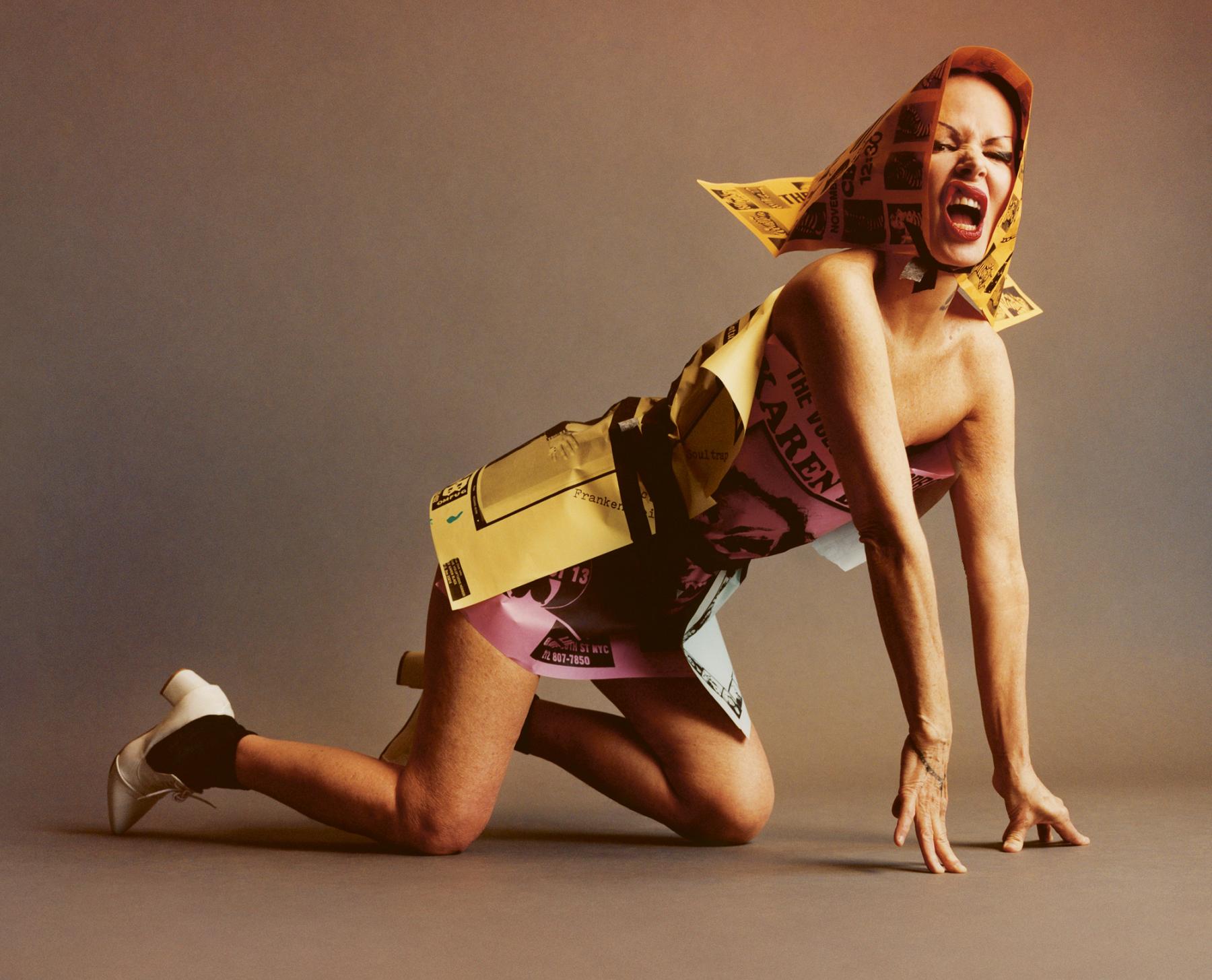
A week after our first encounter I join Kembra for lunch at the Soho hotel where she is now staying. Between our two meetings she has flown to New York and back. The travelling is taking its toll. “I don’t want to fly unnecessarily any more,” she says. “While it’s a real privilege to be able to travel, I’ll do very little of it in the next couple of decades. It’s not necessary. I’m not a jet-setter at all, and my body just can’t handle that kind of speed any more.”
The previous night, awake with jet lag, she had watched an old English horror film on YouTube, The Madonna’s Secret (1946). She has always loved horror films, especially “really camp prophetic horror, not extreme slash horror, and funny science-fiction films. I always thought that’s where art lived,” she says. Her taste stretches to more conventional films, too. “I watched Forrest Gump, like, 20 times.
I love mainstream movies, and I go to them all the time. In New York I go to the Regal cinema every Tuesday; it’s $8 day.” She loves the writings of Philip K Dick and the film adaptations of his works, such as Blade Runner, as well as the adaptations of Frank Herbert’s Dune, both the recent Denis Villeneuve version and David Lynch’s from 1984. She was moved by Christopher Nolan’s Oppenheimer. “I cried my eyeballs out for the end of the world. You’d think we’d learn a lesson from that story. I felt that that movie wanted to point us in a direction of consciousness and having a moral compass, but we’re intense forgetters. I guess we’re not elephants. I’m an elephant. I have an elephant memory.”
Over a lunch of tuna sashimi salad and iced cappuccinos, Kembra tells me about her Future Feminism project, now celebrating its 10th anniversary. In 2011 she teamed up with her friend Anohni, of Anohni and the Johnsons; the dance artist and DJ Johanna Constantine; and the sisters Bianca and Sierra Casady, of the music group CocoRosie. Over the next three years they met several times to discuss and agree on a list of 13 “tenets”. “We shared our own personal histories, and we tried to give language to the things that we were feeling,” Kembra says. “And that language ultimately became the tenets.” These guidelines for building a better world include “Enforce a global standard for the rights and ethical treatment of women,” “Advocate for feminine systems in all areas of governance,” and “The future is female,” a phrase popularised by Hillary Clinton in her first public address after Donald Trump’s inauguration as US president in 2017. “We were trying to change the world, and we’re still trying to do it,” Kembra says.
The tenets were etched into slabs of rose quartz and exhibited at the Hole gallery in New York in 2014, and then in Aarhus, Denmark, in 2017, accompanied by a series of talks and events. “We wanted to make a really beautiful artwork out of something that came from the earth,” Kembra says. “We wanted it to take people’s breath away. Our goal would be to never stop sharing the tenets, to always have the conversation. Misogyny is still rife, and it’s really sad and frustrating to me how much we’ve actually digressed, especially with our rights in the United States.”
Future Feminism is more urgent than ever, Kembra says, and not just because of political developments. “We had a young woman working with us, Ashley Mead, an intern who was incredibly skilled and kept us all together and focused, despite any difficulties we were having. When she returned home to Colorado, she was murdered by her ex-boyfriend, an alcoholic, leaving behind a baby daughter. Every show of Future Feminism we have now is in her honour, so that when her daughter grows up she can see what her mother accomplished before her life was cut short.”
Kembra is collaborating with Rizzoli on a monograph about her work, scheduled for release next spring. She also intends to transfer the Super 8 films she made in the 1990s to digital and find a home for them with a museum. “One of the things that causes me a lot of stress is making sure I get to share those with people before they get ruined or destroyed,” she tells me. “So that’s what I’m going to do over the next few years.” Both projects involve looking back over her life’s work, a process she has previously resisted because “I felt like it would be ‘yesterbating’, which I always felt would prevent me from making new work. I’ve just never been ready for it. Now I think I’m ready.”
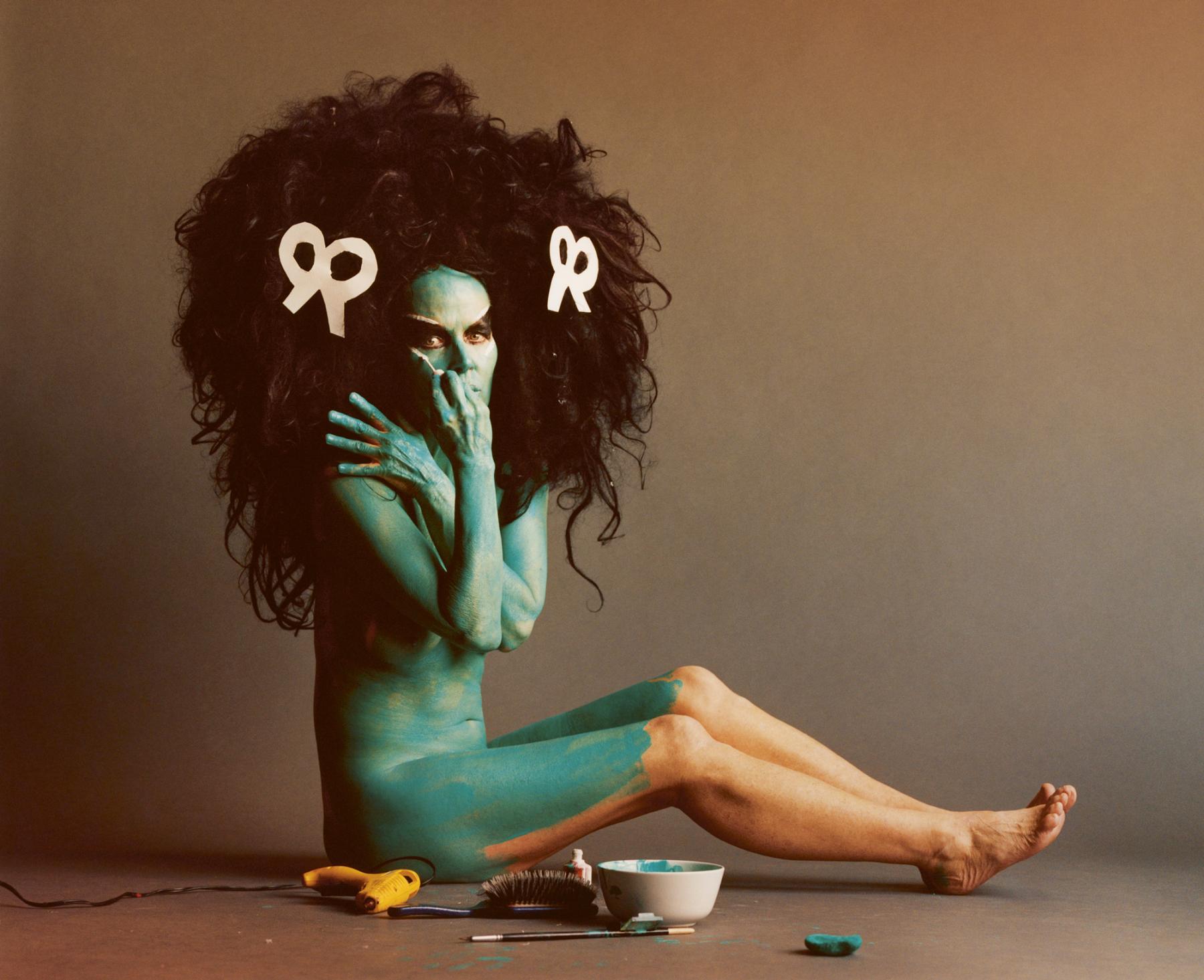
Cristina RuizA distinct and intelligent voice in arts writing who has interviewed Barbara Kruger, Rachel Whiteread, Catherine Opie and Shirin Neshat for The Gentlewoman, Cristina is the former editor of The Art Newspaper who has also contributed to Vanity Fair, the Financial Times, UK Vogue and The Sunday Times Magazine.…read more Portraits by
Jamie HawkesworthFrom Suffolk on the east coast of England, Jamie Hawkesworth is one of the most prolific photographers working today. Initially destined for the forensics lab, his introduction to photography came through a class on crime scene documentation while studying at the University of Central Lancashire. The…read more
Set design: Haleimah Darwish. Production: Farago Projects.
This profile was originally published in The Gentlewoman nº 30, Autumn and Winter 2024.